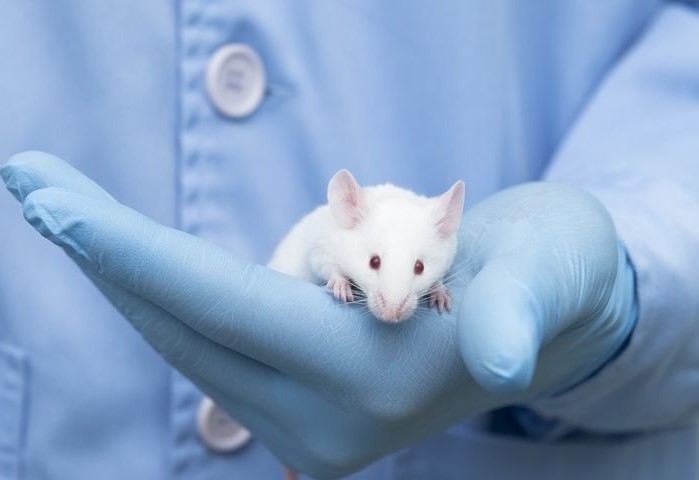Ischemic Post Conditioning Prevents Preterm Cell Death in Rats
Abstract
Ischemic postconditioning, also known as Postcond, is a sequence of periodic blood flow disruptions that happen in the beginning phases of reperfusion and affect the hydrodynamics of reperfusion. Current research reveals that Postcond lessens the severity of infarcts, which in turn lessens the impact of cerebral ischemia/reperfusion (I/R) damage. The paths of Postcond I/R damage are, however, poorly known. The goal of this research was to evaluate Postcond's effects on I/R damage with blocked arteries of brain. Adult were occluded for 60 minutes before receiving postconversion therapy (beginning of reperfusion). At 24 and 72 hours, infarct dimensions and neurologic state were evaluated. Malondialdehyde test was used to quantify oxidative stress, and Western blotting was used to identify substances linked to apoptosis. Following postmortem treatment, the expression of protein increased, but cyt c levels in cytsol dropped, was not activated. Infarct diameters, oxidative stress, and neurologic ratings were decreased with Postcond therapy results imply induced brain damage.
References
Chan PH. Role of oxidants in ischemic brain damage. Stroke. 1996; 27: 1124–1129.CrossrefMedlineGoogle Scholar
Mattson MP, Duan W, Pedersen WA. Neurodegenerative disorders and ischemic brain diseases. Apoptosis. 2001; 6: 69–81.CrossrefMedlineGoogle Scholar
Kowaltowski AJ, Castilho RF, Vercesi AE. Mitochondrial permeability transition and oxidative stress. FEBS Lett. 2001; 495: 12–15.CrossrefMedlineGoogle Scholar
Kroemer G. Mitochondrial control of apoptosis: an introduction. BiochemBiophys Res Commun. 2003; 304: 433–435.CrossrefMedlineGoogle Scholar
Lim ML, Lum MG, Hansen TM. On the release of cytochrome c from mitochondria during cell death signaling. J Biomed Sci. 2002; 9: 488–506.MedlineGoogle Scholar
Kuwana T, Mackey MR, Perkins G. Bid, Bax, and lipids cooperate to form supramolecular openings in the outer mitochondrial membrane. Cell. 2002; 111: 331–342.CrossrefMedlineGoogle Scholar
Li P, Nijhawan D, Budihardio I. Cytochrome c and dATP-dependent formation of Apaf-1/caspase-9 complex initiates an apoptotic protease cascade. Cell. 1997; 91: 479–489.CrossrefMedlineGoogle Scholar
Green DR, Reed JC. Mitochondria and apoptosis. Science. 1998; 281: 1309–1312.CrossrefMedlineGoogle Scholar
Li Y, Chopp M, Jiang N. Temporal profile of in situ DNA fragmentation after transient middle cerebral artery occlusion in the rat. J Cereb Blood Flow Metab. 1995; 15: 389–397.CrossrefMedlineGoogle Scholar
Murry CE, Jennings RB, Reimer KA. Preconditioning with ischemia: a delay of lethal cell injury in ischemic myocardium. Circulation. 1986; 74: 1124–1136.CrossrefMedlineGoogle Scholar
Schaller B, Graf R. Cerebral ischemic preconditioning: an experimental phenomenon or a clinical important entity of stroke prevention. J Neurol. 2002; 249: 1503–1511.CrossrefMedlineGoogle Scholar
Zhao ZQ, Corvera JS, Halkos ME. Inhibition of myocardial injury by ischemic postconditioning during reperfusion: comparison with ischemic preconditioning. Am J Physiol. 2003; 285: 579–588.MedlineGoogle Scholar
Darling CE, Jiang R, Maynard M. Postconditioning via stuttering reperfusion limits myocardial infarct size in rabbit hearts: role of ERK1/2. Am J Physiol. 2005; 289: H1618–H1626.CrossrefMedlineGoogle Scholar
Kin H, Zatta AJ, Lofye MT. Postconditioning reduces infarct size via adenosine receptor activation by endogenous adenosine. Cardiovasc Res. 2005; 67: 124–133.CrossrefMedlineGoogle Scholar
Sun HY, Wang NP, Kerendi F. Hypoxic postconditioning reduces cardiomyocyte loss by inhibiting ROS generation and intracellular Ca2+ overload. Am J Physiol. 2005; 288: 1900–1908.CrossrefMedlineGoogle Scholar
Bopassa JC, Ferrera R, Gateau-Roesch O. PI3-kinase regulates the mitochondrial transition pore in controlled reperfusion and postconditioning. Cardiovasc Res. 2006; 69: 178–185.CrossrefMedlineGoogle Scholar
Kin H, Zhao ZQ, Sun HY. Postconditioning attenuates myocardial ischemia-reperfusion injury by inhibiting events in the early minutes of reperfusion, Cardiovasc Res. 2004; 62: 74–85.CrossrefMedlineGoogle Scholar
Tsang A, Hausenloy DJ, Mocanu MM. Postconditioning: a form of ‘modified reperfusion’ protects the myocardium by activating the phosphatidylinositol 3-kinase–Akt pathway. Circ Res. 2004; 95: 230–232.LinkGoogle Scholar
Sun HY, Wang NP, Halkos M. Postconditioning attenuates cardiomyocyte apoptosis via inhibition of JNK and p38 mitogen-activated protein kinase signaling pathways. Apoptosis. 2006; 11: 1583–1593.CrossrefMedlineGoogle Scholar
Staat P, Rioufol G, Piot C. Postconditioning the human heart. Circulation. 2005; 112: 2143–2148.LinkGoogle Scholar
Zhao H, Sapolsky RM, Steinberg GK. Interrupting reperfusion as a stroke therapy: ischemic postconditioning reduces infarct size after focal ischemia in rats. J Cereb Blood Flow Metab. 2006; 26: 1114–1121.CrossrefMedlineGoogle Scholar
Longa EZ, Weinstein PR, Carlson S. Reversible middle cerebral artery occlusion without craniectomy in rats. Stroke. 1989; 20: 84–91.CrossrefMedlineGoogle Scholar
Khan M, Sekhon B, Jatana M. Administration of N-acetylcysteine after focal cerebral ischemia protects brain and reduces inflammation in a rat model of experimental stroke. J Neurosci Res. 2004; 76: 519–527.CrossrefMedlineGoogle Scholar
Garcia JH, Wagner S, Liu KF. Neurological deficit and extent of neuronal necrosis attributable to middle cerebral artery occlusion in rats: statistical validation. Stroke. 1995; 26: 627–634.CrossrefMedlineGoogle Scholar
Tsubokawa T, Jadhav V, Solaroglu I. Lecithinized superoxide dismutase improves outcomes and attenuates focal cerebral ischemic injury via antiapoptotic mechanisms in rats. Stroke. 2007; 38: 1057–1062.LinkGoogle Scholar
Jung KH, Chu K, Ko SY. Early intravenous infusion of sodium nitrite protects brain against in vivo ischemia-reperfusion injury. Stroke. 2006; 37: 2744–2750.LinkGoogle Scholar
Williams AJ, Berti R, Dave JR. Delayed treatment of ischemia/reperfusion brain injury extended therapeutic window with the proteosome inhibitor MLN519. Stroke. 2004; 35: 1186–1191.LinkGoogle Scholar
Wei X, Liu H, Sun X. Hydroxysafflor yellow A protects rat brains against ischemia-reperfusion injury by antioxidant action. Neurosci Lett. 2005; 386: 58–62.CrossrefMedlineGoogle Scholar
Matsumori Y, Hong SM, Aoyama K. Hsp70 overexpression sequesters AIF and reduces neonatal hypoxic/ischemic brain injury. J Cereb Blood Flow Metab. 2005; 25: 899–910.CrossrefMedlineGoogle Scholar
Kao TK, Ou YC, Kuo JS. Neuroprotection by tetramethylpyrazine against ischemic brain injury in rats. Neurochem Int. 2006; 48: 166–176.CrossrefMedlineGoogle Scholar
Le DA, Wu Y, Huang Z. Caspase activation and neuroprotection in caspase-3-deficient mice after in vivo cerebral ischemia and in vitro oxygen glucose deprivation. Proc Natl Acad Sci U S A. 2002; 99: 15188–15193.CrossrefMedlineGoogle Scholar
Saraswat. Anuj, Ms. Puja Lal. Demonstrating Mechanisms Of Ischemic Postconditioning. Drugs and Cell Therapies in Hematology, 2021; 10(3), 225–228.
Sarkar Barun Ranjan, Dr. Rakesh Kumar Sharma. Studying The Significance Of Biopolymers In Wound Healing. Drugs and Cell Therapies in Hematology, 2021; 10(3), 301–305.
Upadhyay Akash, Shalini Suchita. Significance Of Secondary Prevention Of Cardiovascular Diseases And Related Lifestyle Intervention. Drugs and Cell Therapies in Hematology, 2021; 10(3), 263–267.







